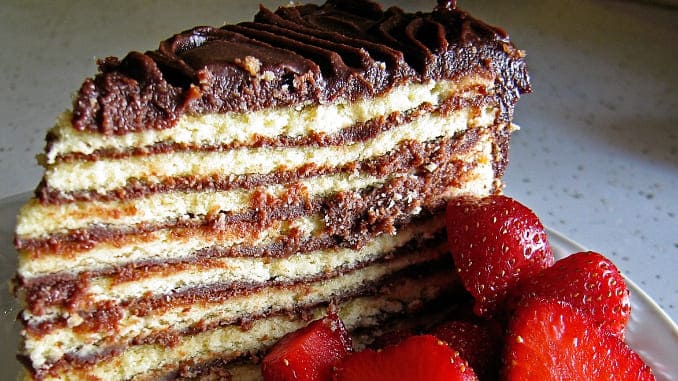The Enigmatic Origin of Maryland’s Most Storied Dessert
Photo by Jane Thomas/Creative Commons
About twelve miles off the coast of Maryland, there’s a tiny time capsule floating in the Tangier Sound, a speck of land that’s been inhabited for more than 300 years and a place that’s steadily disappearing. On a map, Smith Island is a smattering of tiny smudges engulfed by the vastness of America’s largest estuary, the Chesapeake Bay. The last inhabited island in Maryland without a link to the mainland, today, Smith Island is one of just three islands in the entire mid-Atlantic region that still has year-round residents. Groceries and mail arrive by boat, and the fastest way for visitors to reach the island is on a ferry from Crisfield, the closet mainland town.
Smith Island is actually a bit of a misnomer—the place is technically an archipelago, a smattering of marsh-tufted barrier islands perforated by tidal creeks. The entire cluster of islands is about 8,000 acres, but only about 900 acres are truly habitable—and dry land is vanishing. These days, there are about 200 year-round residents in the archipelago’s trio of communities: Ewell, Rhodes Point and Tylerton. The region may be famed for its crabs and oysters, but more recently, a dessert has drawn visiting gastronomers: the Smith Island Cake.
A Mysterious Origin
A multi-layered confection with equal parts cake and icing, a traditional Smith Island Cake has at least eight layers cemented together with fudgy frosting. The zebra-striped delicacy was declared the official State Dessert of Maryland in 2008. Champions of the cake served pieces to every member of the legislature, dishing up more than a thousand slices in the process. In the end, House Bill 315 passed with bipartisan support.
Still, the origin of the artfully tiered dessert and the reason for the layering remains an enigma. According to Smith Islanders like Mary Ada Marshall, a baker extraordinaire who contributed some of the cakes catalyzing House Bill 315, recipes for the dessert have been passed down for generations but never attributed to a specific baker.
The first time a recipe for the cake appeared in print was in the second edition of Frances Kitching’s seminal Smith Island cookbook, published in 1994. The dessert was inexplicably absent from the original version, but in the second printing, Kitching included a recipe for dessert: ten layers of yellow cakes slathered with chocolate frosting.
-

-

-

-

-

-

-

-

-

-

-

-

-

-

-

-

-

-

-

-

-

-

-

-

-

-

-

-

-

-

-

-

-

-

-

-

-

-

-

-








































